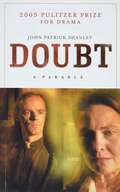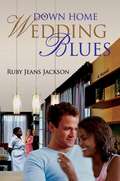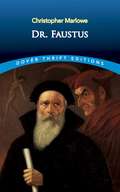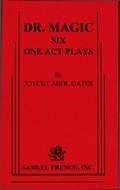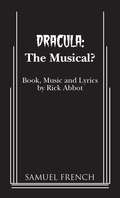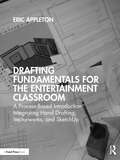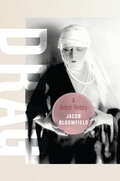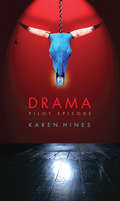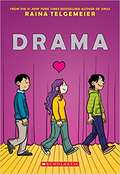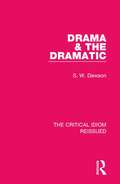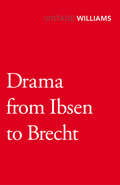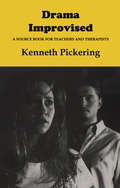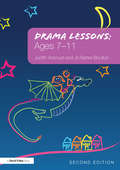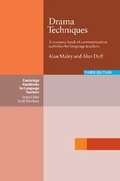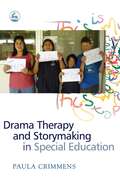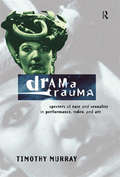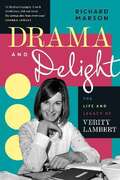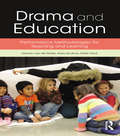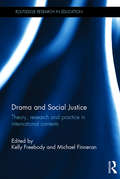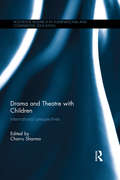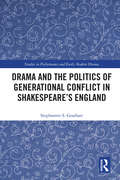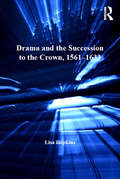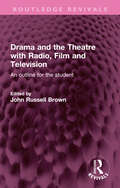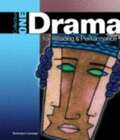- Table View
- List View
Doubt: A Parable
by John Patrick ShanleyChosen as the best play of the year by over 10 newspapers and magazines, Doubt is set in a Bronx Catholic school in 1964, where a strong-minded woman wrestles with conscience and uncertainty as she is faced with concerns about one of her male colleagues. This new play by John Patrick Shanley—the Bronx-born-and-bred playwright and Academy Award-winning author of Moonstruck—dramatizes issues straight from today’s headlines within a world re-created with knowing detail and a judicious eye. After a stunning, sold-out production at Manhattan Theatre Club, the play has transferred to Broadway. <p><p> John Patrick Shanley is the author of numerous plays, including Danny and the Deep Blue Sea, Dirty Story, Four Dogs and a Bone, Psychopathia Sexualis, Sailor’s Song, Savage in Limbo, and Where’s My Money?. He has written extensively for TV and film, and his credits include the teleplay for Live from Baghdad and screenplays for Congo, Alive, Five Corners, Joe Versus the Volcano (which he also directed), and Moonstruck, for which he won an Academy Award for original screenplay.
Down Home Wedding Blues
by Ruby Jeans JacksonAn intence love affair between the son of a wealthy white family and the daughter of their poor black maid.
Dr. Faustus (Dover Thrift Editions)
by Christopher MarloweOne of the most durable myths in Western culture, the story of Faust tells of a learned German doctor who sells his soul to the devil in exchange for knowledge and power. Early enactments of Faust's damnation were often the raffish fare of clowns and low comedians. But the young Elizabethan playwright Christopher Marlowe (1564-1593) recognized in the story of Faust's temptation and fall the elements of tragedy.In his epic treatment of the Faust legend, Marlowe retains much of the rich phantasmagoria of its origins. There are florid visions of an enraged Lucifer, dueling angels, the Seven Deadly Sins, Faustus tormenting the Pope, and his summoning of the spirit of Alexander the Great. But the playwright created equally powerful scenes that invest the work with tragic dignity, among them the doomed man's calling upon Christ to save him and his ultimate rejection of salvation for the embrace of Helen of Troy.With immense poetic skill, and psychological insight that foreshadowed the later work of Shakespeare and the Jacobean playwrights, Marlowe created in Dr. Faustus one of the first true tragedies in English. Vividly dramatic, rich in poetic grandeur, this classic play remains a robust and lively exemplar of the glories of Elizabethan drama.
Dr. Magic: Six One Act Plays
by Joyce Carol OatesContents: Homesick Dr. Magic Here She Is! Negative The Adoption When I was a Little Girl and My Mother Didn't Want Me
Dracula: The Musical?
by Rick AbbotMusical Farce / 4m, 4f / At its New York City premiere, patrons stood in line in a blizzard for tickets. At its Australian premiere, every seat for every performance was sold, and one critic noted, "the performance was one of the most enjoyable I've seen . . . My only other experience of the Dracula play . . . was the one that Sir Robert Helpmann directed . . . I can honestly say I enjoyed this one much more. It exhibited a superb sense of humor." Melodic, rollicking and hilarious, the show is also an economist's dream: one set, startling but simple special effects, and piano only accompaniment. This delightful spoof of the classic horror tale is an unparalleled romp from start to finish. The author here unveils his merits as a superbly adept composer to the joy of performers and audiences worldwide.
Drafting Fundamentals for the Entertainment Classroom: A Process-Based Introduction Integrating Hand Drafting, Vectorworks, and SketchUp
by Eric AppletonDrafting Fundamentals for the Entertainment Classroom: A Process-Based Introduction to Hand Drafting, Vectorworks, and SketchUp guides students through a syllabus-formatted semester of integrated drafting concepts and skills. This book links beginner visualization practices with fundamental software knowledge through step-by-step exercises and examples. By presenting hand drafting and Vectorworks through incremental exercises, students not only gain an understanding of the tools used in drafting but also learn why the tools, practices, and standards exist in the first place. SketchUp, a user-friendly 3D modeling program, is integrated into the various exercises to help readers visualize concepts and begin modeling their own ideas. By the end of the book, students will understand drawing construction techniques, United States Institute for Theatre Technology (USITT)-recommended graphic standards, and the typical drawings created for entertainment design, preparing them to dive more deeply into the further complexities and opportunities of Vectorworks and SketchUp. Drafting Fundamentals for the Entertainment Classroom is written to complement a 14- or 15-week semester of an Entertainment Drafting course. The book’s format also provides structure for independent and self-directed study.
Drag: A British History (Berkeley Series in British Studies #23)
by Jacob Bloomfield"A must-read for anyone interested in the history of drag performance."—Publishers WeeklyA rich and provocative history of drag's importance in modern British culture. Drag: A British History is a groundbreaking study of the sustained popularity and changing forms of male drag performance in modern Britain. With this book, Jacob Bloomfield provides fresh perspectives on drag and recovers previously neglected episodes in the history of the art form. Despite its transgressive associations, drag has persisted as an intrinsic, and common, part of British popular culture—drag artists have consistently asserted themselves as some of the most renowned and significant entertainers of their day. As Bloomfield demonstrates, drag was also at the center of public discussions around gender and sexuality in the nineteenth and twentieth centuries, from Victorian sex scandals to the "permissive society" of the 1960s. This compelling new history demythologizes drag, stressing its ordinariness while affirming its important place in British cultural heritage.
Drama
by Karen HinesDr. Penelope Douglas is an ex-forensic psychiatrist looking for a fresh start in a styling western boomtown, but on her first day practicing in her boutique suite, a young television writer hangs himself in her subway-tiled bathroom. A dissection of contemporary television drama through the eyes of the dead writer reveals to Penelope an unsettling connection between the forty-four-minute television hour and the disintegration of the human soul. But it isn't until Penelope's oil wife friend pronounces Penelope her unborn baby's spiritual godmother that Dr. Douglas takes the dive into the uncharted waters of her own unconscious to break the spell that has the frontier in its filthy grip. Will Dr. Douglas be able to find heart in this wild new landscape? Will she have to smudge her lipstick to 'cowboy up'? Drama, the long-awaited new play by the master of edgy dark humour, has all the answers.
Drama
by Raina TelgemeierThe bestselling, award-winning author of Smile brings us her next full-colour graphic novel! Callie loves theater. And while she would totally try out for her middle school's production of Moon Over Mississippi, she's a terrible singer. Instead she's the set designer for the stage crew, and this year she's determined to create a set worthy of Broadway on a middle-school budget. But how can she, when she doesn't know much about carpentry, ticket sales are down, and the crew members are having trouble working together? Not to mention the onstage AND offstage drama that comes once the actors are chosen, and when two cute brothers enter the picture, things get even crazier! Following the success of Smile, Raina Telgemeier brings us another graphic novel featuring a diverse set of characters that humorously explores friendship, crushes, and all-around drama!
Drama & the Dramatic (The Critical Idiom Reissued #10)
by S. W. DawsonFirst published in 1970, this book explores drama as literature and provides critical overviews of different aspects of drama and the dramatic. It first asks what a play is, before going on to examine dramatic language, action and tension, dramatic irony, characters and drama’s relationship with modern criticism and the novel. This book will be a valuable resource to those studying drama and English literature.
Drama From Ibsen To Brecht
by Raymond WilliamsWith typical critical flair, Raymond Williams examines the development of the dramatic form from Henrik Ibsen to Bertolt Brecht. Taking an expansive view of drama from around the world, he offers the reader profound insights into the role of theatre in society and into the workings of dramatic language. This is seminal reading for theatre-goers and literature students alike.
Drama Improvised: A Sourcebook for Teachers and Therapists
by Kenneth PickeringThis book provides a practical, accessible, and inexpensive guide to using improvisation in drama, which lies at the root of actor training, educational drama and drama therapy, in a wide variety of situations. It is useful for teachers, organizers of drama workshops, therapists and trainers.
Drama Lessons: Ages 7-11
by Judith Ackroyd Jo Barter-BoultonDrama Lessons: Ages 7–11 offers an exciting and varied range of tried and tested lessons tailor-made for busy teachers. Drama Lessons: Ages 7–11 emerges from the continuing positive responses to Drama Lessons for Five to Eleven Year Olds (2001). In this book you will find a carefully chosen selection of the best lessons from the original book, plus some exciting new material – a combination of brand new and classic lessons. This new collection introduces Literacy Alerts which identify how the drama activities develop aspects of literacy and suggest additional literacy activities. For each lesson plan, essential resources and timing information are provided. The lessons cover a range of themes and curriculum areas. Full of pick-up-and-go lesson plans, this book will be of enormous interest to specialists and non-specialists of drama alike. All primary teachers, literacy coordinators and teaching assistants should have this book in their hands and it will give all trainee teachers a flying start in their school placements.
Drama Part-3 Paper-5 Swamy Success Guide - Annamalai University
by Swamy Publications Chidambaram CuddaloreThis guide book is about Drama Part-3 Paper-5 for B A English Annamalai University Chidambaram published by Swamy Publications, Chidambaram, Cuddalore to make the readers to understand the concept easily.
Drama Techniques: A Resource Book of Communication Activities for Language Teachers
by Penny Ur Alan Maley Alan DuffThe fully revised edition of this 'classic' helps teachers give their learners the tools they need to express themselves through a range of stimulating drama contexts. This completely revised edition of the classic title Drama Techniques provides: *150 ideas for interesting and productive fluency practice *a large selection of drama-based techniques which focus learners' attention on communicative tasks or activities *techniques suitable for all levels *clear instructions for the teacher *advice on how to use the techniques in the classroom
Drama Therapy and Storymaking in Special Education
by Paula CrimmensMany aspects of drama therapy make it an ideal technique to use with students with special learning needs. This practical resource book for professionals covers the broad spectrum of students attending special needs schools, including those with attention deficit disorder, autism and Asperger syndrome, and students with multiple disabilities. Paula Crimmens places therapeutic storymaking within the context of drama therapy and offers practical advice on how to structure and set up sessions to be compatible with special needs learning environments. She shows how story sessions can address issues of self-esteem and self-mastery, and how their use in groups is invaluable for building social and communication skills. The book includes traditional stories from around the world as session material, and includes guidance on how to devise stories relevant to older students, as well as a review of recent research into the effectiveness of drama therapy in engaging and retaining the attention of students with an intellectual disability.
Drama Trauma: Specters of Race and Sexuality in Performance, Video and Art
by Timothy MurrayIn this engaging cross-disciplinary study, Timothy Murray examines the artistic struggle over traumatic fantasies of race, gender, sexuality, and power. Establishing a retrospective dialogue between past and present, stage and video, Drama Trauma links the impact of trauma on recent political projects in performance and video with the specters of difference haunting Shakespeare's plays. The book provides close readings of cultural formations as diverse as Shakespearean drama, the Statue of Liberty, contemporary plays by women, African-American performance, and feminist interventions in video, performance and installation. The texts discussed include: * installations by Mary Kelly and Dawn Dedeaux, * plays by Ntozake Shange, Rochelle Owens, Adrienne Kennedy, Marsha Norman and Amiri Baraka * performances by Robbie McCauley, Jordan, Orlan, and Carmelita Tropicana * stage, film and video productions of King Lear, Othello, Romeo and Juliet and All's Well that Ends Well.
Drama and Delight: The Life of Verity Lambert
by Richard MarsonWhen you consider her remarkable five decades as one of the major talents in British television drama, it is not surprising that soon after she died the BBC gave Verity Lambert the honour of an hour-long obituary, with the corny but appropriate title, Drama Queen. This is a biography of Verity Lambert.
Drama and Education: Performance Methodologies for Teaching and Learning
by Manon van de Water Mary McAvoy Kristin HuntDrama and Education provides a practical, comprehensive guide to drama as a tool for teaching and learning. It is among the first practical drama and performance textbooks that address brain-based, neuroscientific research, making the argument that creativity is necessary in our lives, that embodied learning is natural and essential, and that contextual learning helps us find our place in society in relationship to other peoples and cultures. As well as a historical and theoretical overview of the field, it provides rationale and techniques for several specific methodologies:?linear drama, process-oriented drama, drama for social justice, and performance art. Each approach is supplemented with sample lesson plans, activities, ideas for differentiation, and extensive bibliographies. The topics are discussed from five key angles: ? • Historical and theoretical foundations • Curricular applications • Practical toolkits for a range of classrooms and learning environments • Different strategies for lesson plans • Extension options for longer workshops. ? Alongside these core methods, the integration of other innovative forms—from performance art to Theatre of the Oppressed—into drama-based learning is explored, as well as the pragmatic concerns such as assessment, planning, and advocacy for arts learning and arts education partnerships. ? Drama and Education is the comprehensive textbook for teachers and students on Applied Theatre and Theatre and Education courses. ?
Drama and Social Justice: Theory, research and practice in international contexts (Routledge Research in Education)
by Kelly Freebody Michael Finneran"This text offers a cohesive framework for exploring social justice through drama and drama from a social justice perspective. Research based examples of practice from a range of international contexts link theory and practice. Connecting chapters raise key critical questions in an engaging dialogue format. An important addition to the literature on social justice education." - Lee Anne Bell, author Storytelling for Social Justice (2010) and co-editor of Teaching for Diversity and Social Justice (Routledge, 2007) Much has been written within the tradition of drama education and applied theatre around the premise that drama can be a force for change within both individual lives and society more broadly. However, little has been published in terms of charting the nature of this relationship. By combining theoretical, historical and practical perspectives, this book unpacks and explores drama’s intrinsically entwined relationship with society more comprehensively and critically.Chapters gather together and develop a range of theoretical understandings of social justice in applied drama in the first part of the book, which are then used to frame and inform more focused discussions of drama research and practice in the second. Contributors move beyond practical understandings of drama for empowerment or development in order to engage with the philosophy of praxis – the interconnected and symbiotic nature of theory derived from practice, and practice derived from theory. Including concrete examples from current research and practice in the field, the book opens up a conversation on and counter-narrative to perceptions of the nature and impact of applied theatre and drama education on social justice.Drama and Social Justice will be key reading for postgraduate students, academics, researchers and field-based practitioners in the areas of applied drama and theatre, education and youth work, and social justice and the social sciences.
Drama and Theatre with Children: International perspectives (Routledge Research in International and Comparative Education)
by Charru SharmaDrama as a process-centred form is a popular and valued methodology used to develop thinking and learning in children, while theatre provides a greater focus on the element of performance. In recent years, offering drama and theatre as a shared experience is increasingly used to engage children and to facilitate learning in a drama classroom. Using drama and theatre as a central component with children, this book is an amalgamation of theory, research and practice from across the globe offering insights into differing educational contexts. Chapters provide an exploration of the methodologies and techniques used to improve drama in the curriculum, and highlight the beneficial impact drama has in a variety of classrooms, enriching learning and communication. Contributions from 17 authors, ranging from teachers in schools or universities, to researchers and drama practitioners, examine a variety of perspectives related to drama and children in an attempt to bridge gaps and move ahead collectively as educators, practitioners and researchers in drama and theatre. Divided into two parts, Part I reflects on the use of drama in its varied forms with children, while Part II focuses on projects and experiments with children using theatre in order to draw links between drama, theatre and pedagogy. Drama and Theatre with Children will be key reading for researchers, academics and postgraduate students in the fields of drama education, theatre education, curriculum studies and child development. The book will also be of interest to drama practitioners, school teachers and teacher training leaders.
Drama and the Politics of Generational Conflict in Shakespeare's England (Studies in Performance and Early Modern Drama)
by Stephannie GearhartDrama and the Politics of Generational Conflict in Shakespeare’s England examines the intersection between art and culture and explains how ideas about age circulated in early modern England. Stephannie Gearhart illustrates how a variety of texts – including drama by Shakespeare, Jonson, and Middleton – placed elders’ and youths’ voices in dialogue with one another to construct the period’s ideology of age and shape elder-youth relations.
Drama and the Succession to the Crown, 1561-1633 (Studies In Performance And Early Modern Drama Ser.)
by Lisa HopkinsThe succession to the throne, Lisa Hopkins argues here, was a burning topic not only in the final years of Elizabeth but well into the 1630s, with continuing questions about how James's two kingdoms might be ruled after his death. Because the issue, with its attendant constitutional questions, was so politically sensitive, Hopkins contends that drama, with its riddled identities, oblique relationship to reality, and inherent blurring of the extent to which the situation it dramatizes is indicative or particular, offered a crucial forum for the discussion. Hopkins analyzes some of the ways in which the dramatic works of the time - by Marlowe, Shakespeare, Webster and Ford among others - reflect, negotiate and dream the issue of the succession to the throne.
Drama and the Theatre with Radio, Film and Television: An outline for the student (Routledge Revivals)
by John Russell BrownFirst published in 1971, Drama and the Theatre with Radio, Film and Television is concerned with the nature of theatre as a subject for study and the ways of studying it. All its contributors have practical experience of staging plays for professional or student companies, or for both. Necessarily, attention is chiefly focused on the main elements of plays in performance in theatres, now and in the past. The chosen topics place more specialized studies in a wider context, because such a book as this needs, above all, to give an impression of general scope. It is intended for those aiming for a theatre career and for young students interested in theatre.
